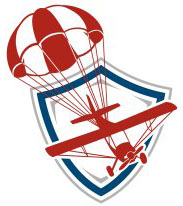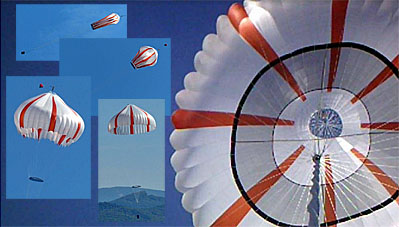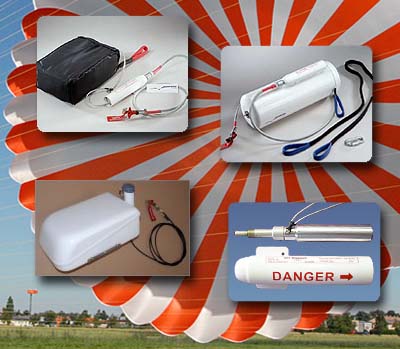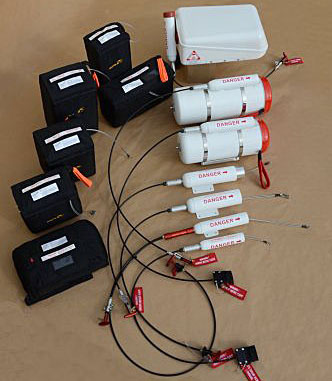Let’s say you are flying on a wonderful cross country trip. You’ve been humming along enjoying a beautiful day. The plane is flying great and sightseeing is superb.

Midway across the lake, your engine unexpectedly sputters and stops. You calmly run through your checklist. Nothing appears amiss. You try restarting but the engine won’t cooperate. Anywhere you look it’s the same distance to land. You calculate you can’t glide far enough.
What do you do?

The black ring is Magnum’s version of something generically called a “slider,” adapted from BRS Parachutes, which adapted the concept from square skydiving canopies. It works to prevent damage from a high speed parachute opening.
I hope you never face this scenario. You probably will not. Modern engines, airframes, and instrument panels make it most unlikely. Nonetheless, it happens.
Do you believe you could set down in the water in such a way that you can escape? Of course, you’ve never practiced a water ditching and that move by Captain Sully may not be your option.
I have flown to the Bahamas with and without an airframe parachute. I never experienced even a hiccup from the engine or other systems but I’m here to tell you the flights with the parachute were far less stressful. Stress is never good and your flight over the lake when the engine quit dramatically increased your stress level. How well do you think you will perform when your heart is pounding?
Disclaimer: I used to be involved with a company producing these systems. I am clearly biased in their favor. Yet in my former role I spoke to literally dozens of people who had pulled the handle and every single one of them thought it made all the difference in the world. Most said, “You just saved my life!”

Magnum offers a line of systems for different airplane applications.
Certainly, if you can fly to an emergency landing, do so! Absolutely! However, sometimes, even a Captain Sully has to play the cards he’s been dealt. In his case that turned out well. He became a hero. Yet if you fly in a fixed gear airplane the odds of your airplane flipping upside down are seriously high. If so, and you and your passenger are upside down in the water, will you get out in time?
Look, this may not be how you choose to think about your flying. It’s supposed to be fun and enjoyable and it nearly always is so. Nonetheless, you practice stalls, emergency approaches, and crosswind landings so you are ready if it turns ugly on you. Most of the time that training works great. Even better, it is rarely — very rarely — needed.
Is it wise to ignore the possibility a parachute might be your only option, even once in your flying career? Check Magnum Parachutes page and see a list of some (but not all) the times when a parachute might be very valuable. Can you avoid all these situations? Yes, maybe… hopefully! Do you want to bet the farm on it?

Magnum Parachutes offers rocket-deployed systems for a wide variety of airplanes. They are supplied from a U.S. importer who has all the credentials to do so competently and safely. Check their product line to see what Magnum offers and what a system will cost.
Then do your best planning because when the engine hiccups over unlandable terrain, it’s too late to buy and I don’t want to lose any of my flying buddies to an avoidable incident.
The video below shows a fuselage extraction test performed by manufacturer Stratos 07.


Leave a Reply